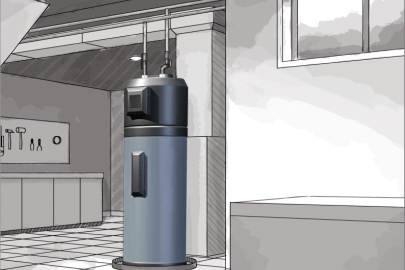Effective Techniques for Maintaining Your Home's Hot Water SystemEasy Guide to Maintaining Your Home's Hot Water SystemImportant Guidance on Maintaining Your Home's Hot Water System
Effective Techniques for Maintaining Your Home's Hot Water SystemEasy Guide to Maintaining Your Home's Hot Water SystemImportant Guidance on Maintaining Your Home's Hot Water System
Blog Article
The content listed below pertaining to How to Maintain a Hot Water Heater in a Few Simple Steps is fairly informative. Don't miss out on it.

Warm water is vital for day-to-day comfort, whether it's for a rejuvenating shower or cleaning meals. To ensure your hot water system runs successfully and lasts much longer, routine maintenance is key. This post offers practical ideas and insights on exactly how to maintain your home's warm water system to stay clear of disruptions and costly repair services.
Intro
Preserving your home's warm water system could seem challenging, yet with a few straightforward steps, you can ensure it runs efficiently for years to find. This overview covers every little thing from comprehending your warm water system to DIY upkeep suggestions and recognizing when to call in expert aid.
Significance of Preserving Your Warm Water System
Regular upkeep not just extends the life expectancy of your warm water system but also ensures it operates effectively. Disregarding upkeep can lead to reduced performance, greater power costs, and even premature failure of the system.
Indications Your Warm Water System Demands Upkeep
Knowing when your warm water system requires focus can avoid significant problems. Watch out for indications such as irregular water temperature level, odd noises from the heating unit, or corroded water.
Comprehending Your Warm Water System
Before diving into upkeep jobs, it's handy to recognize the fundamental components of your hot water system. Typically, this includes the water heater itself, pipes, anode poles, and temperature controls.
Monthly Maintenance Tasks
Routine month-to-month checks can aid capture minor problems before they intensify.
Purging the Hot Water Heater
Purging your water heater removes sediment buildup, enhancing effectiveness and lengthening its life.
Monitoring and Replacing Anode Rods
Anode rods avoid rust inside the storage tank. Examining and replacing them when broken is essential.
Examining and Changing Temperature Settings
Readjusting the temperature level setups guarantees ideal performance and security.
DIY Tips for Maintenance
You can execute several upkeep jobs yourself to maintain your hot water system in leading problem.
Checking for Leakages
Regularly evaluate pipelines and connections for leaks, as these can cause water damages and greater costs.
Evaluating Stress Relief Valves
Testing the stress safety valve ensures it functions appropriately and stops excessive pressure accumulation.
Protecting Pipes
Insulating warm water pipes reduces heat loss and can conserve energy.
When to Call a Professional
While do it yourself maintenance is advantageous, some concerns need professional proficiency.
Facility Concerns Needing Professional Assistance
Instances include major leakages, electrical troubles, or if your water heater is continually underperforming.
Routine Specialist Upkeep Conveniences
Professional maintenance can consist of complete evaluations, tune-ups, and making certain compliance with safety and security criteria.
Conclusion
Normal maintenance of your home's warm water system is necessary for efficiency, long life, and cost savings. By adhering to these ideas and knowing when to look for professional aid, you can make sure a reputable supply of warm water without unforeseen disruptions.
How to Maintain an Instant Hot Water Heater
Before tinkering with your hot water heater, make sure that it’s not powered on. You also have to turn off the main circuit breaker and shut off the main gas line to prevent accidents. Also turn off the water valves connected to your unit to prevent water from flowing into and out of the appliance. 2. When you’re done, you have to detach the purge valves’ caps. These look like the letter “T” and are situated on either side of the water valves. Doing so will release any pressure that has accumulated inside the valves while at the same time avoid hot water from shooting out and burning your skin. 3. When the purge valves’ caps are removed, you have to connect your hosing lines to the valves. Your unit should have come with three hoses but if it didn’t, you can purchase these things from any hardware or home repair shops. You can also get them from retail stores that sell water heating systems. Read the user’s manual and follow it to complete this task properly. When the hosing lines are connected, open the purge port’s valves. 4. You should never use harsh chemical cleaners or solutions when cleaning your unit. Make use of white vinegar instead. It should be undiluted and you’ll probably use about 2 gallons. 5. Now flush your water heater. This task should probably take about 40 minutes. We can’t give you specific directions for this because the procedure is carried out depending on the type, model and brand of your heater. With that being said, refer to the user’s manual. 6. When you’re done draining the unit, you have to turn off the purge port valves again. Remove the hosing lines that you earlier installed on each of the water valves. Put the valve caps (purge port) back in their respective places and be very careful so as not to damage the rubber discs that are found inside these caps. 7. Now that everything’s back in place, check your user’s manual again to find out how to reactivate your water heating system. 8. Once it is working, turn one of your hot water faucets on just to let air pass through the heater’s water supply pipes. Leave the tap on until water flows smoothly out of it. https://www.orrplumbing.com/blog/2014/september/how-to-maintain-an-instant-hot-water-heater/

I stumbled upon that blog entry about How to Maintain Your Water Heater & Prolong its Life while doing a search on the internet. Are you aware of another person who is excited by the subject? Do not hesitate to promote it. Thanks a bunch for being here. Don't hesitate to come by our blog back soon.
Click Here To Read More Report this page